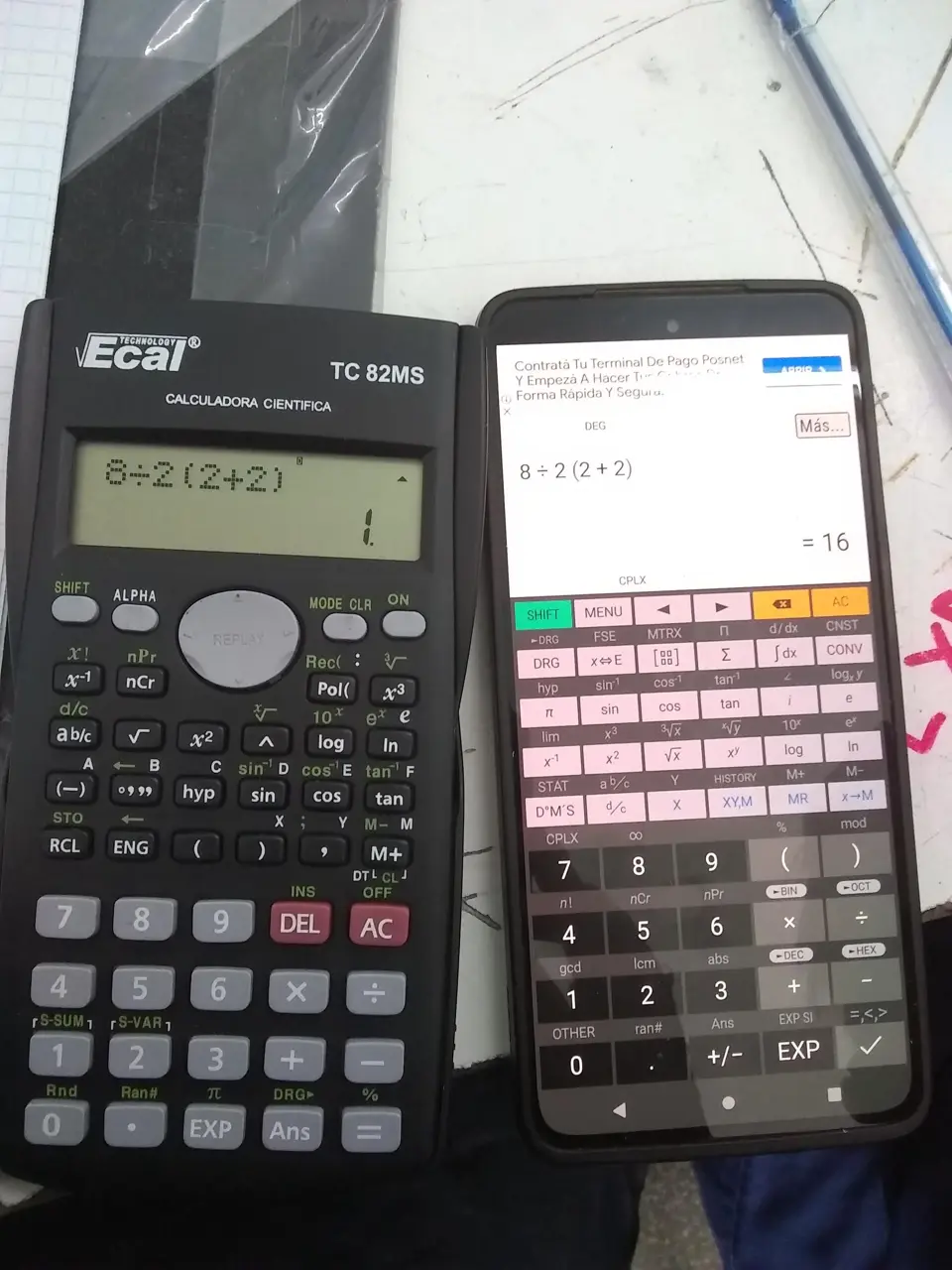this post was submitted on 03 Dec 2023
418 points (100.0% liked)
196
16244 readers
2080 users here now
Be sure to follow the rule before you head out.
Rule: You must post before you leave.
founded 1 year ago
MODERATORS
you are viewing a single comment's thread
view the rest of the comments
view the rest of the comments

There's quite a few calculators that get this wrong. In college, I found out that Casio calculators do things the right way, are affordable, and readily available. I stuck with it through the rest of my classes.
Casio does a wonderful job, and it's a shame they aren't more standard in American schooling. Texas Instruments costs more of the same jobs, and is mandatory for certain systems or tests. You need to pay like $40 for a calculator that hasn't changed much if at all from the 1990's.
Meanwhile I have a Casio fx-115ES Plus and it does everything that one did, plus some nice quality of life features, for less money.
$40??!! My ti that was required was like over $200!!
TI did the same thing Quark and Adobe did later on – got dominance in their markets, killed off their competition, and then sat back and rested on their laurels thinking they were untouchable
EDIT: although in part, we should thank TI for one thing – if they hadn’t monopolized the calculator market, Commodore would’ve gone into calculators instead of computers
If you're lucky, you can find these TI calculators in thrift shops or other similar places. I've been lucky since I got both of my last 2 graphing calculators at a yard sale and thrift shop respectively, for maybe around $40-$50 for both.
The TI equivalent to the Casio fx-115ES Plus is the TI-36X Pro, and they both cost $20 at Walmart.
Sharp as well.
Ditto for Sharp. It's really only Texas Instruments that is the ongoing exception to the rule.
My Casio calculators get this wrong, even the newer ones. BTW the correct answer is 16, right?
No, the correct answer is 1.
Depends on the system you use. Most common system worldwide and in the academic circles (the oldest of the two) has 1 as the answer.
There are no other systems - only people who are following the actual rules of Maths and those who aren't. And yes, 1 is the correct answer
(8 ÷ 2) × (2 + 2)8 ÷ (2 × (2 + 2))2 2 + 8 2 ÷ × .(× (÷ 8 2) (+ 2 2))You added brackets and changed the answer. 2(2+2) is a single term, and if you break it up then you change the answer (because now the (2+2) is in the numerator instead of in the denominator).
The only right answer
Nope, 1 is the only correct answer.
Except they don't. This isn't a notation problem, it's a people don't remember the rules of Maths problem.
prefix notation doesn't need parentheses either though, at least in this case. lisp uses them for readability and to get multiple arity operators. infix doesn't have any ambiguity either if you parenthesize all operations like that.
There isn't any ambiguity even if you don't.
Yes
8 / 2 (2+2)
8 / 2 (4)
4 (4)
16
No
8 / 2 (2+2)
8 / 2 (4)
8 / 8
1
No. Order of operations is left to right, not right to left. 1 is wrong.
Order of operations is BEDMAS, THEN left to right within each operator.
1 is the only correct answer.
Pemdas.
Multiplication comes before division.
1 is the correct answer.
That's wrong. Multiplication and division have equal precedence, same as addition and subtraction. You do them left to right. PEMDAS could be rewritten like PE(MD)(AS). After parentheses and exponents, it"s Multiplication and division together, then addition and subtraction together. They also teach BODMAS some places, which is "brackets, order, division and multiplication, addition and subtraction" Despite reversing the division and multiplication, it doesn't change the order of operations. They have the same priority, so they are just done left to right. PEMDAS and BODMAS are the different shorthand for the same order of operations.
1 is the correct answer, but it's because Brackets comes before Division - there is no Multiplication in this problem.
There's an argument to be made that implicit multiplication comes before division, resulting in the answer 1, but all multiplication? That's wrong, full-stop. You calculate (explicit) multiplication and division in one step, left to right. Reason being that division is technically just multiplying by the reciprocal.
There's no such thing as implicit multiplication.
No.
8 / 2 (4) 8/(2x4) 8/8 1
That's (2x4). Doing division before brackets goes against the order of operations rules.
I didn't say they weren't. I said...
You did 8/2x4, which is the same as (8/2)(2+2), which isn't the same as 8/2(2+2)=8/2(4)=8/(2x4).
No, as I already pointed out, it's the same as (2x4). You can't remove brackets unless there is only 1 term left inside. 2x4 is 2 terms, so can't remove brackets yet.
Also Google...
Well, they demonstrably are all wrong, as per the rules of Maths.
BWAHAHAHA! 😂 Google gets it wrong too. Try looking in a Maths textbook instead (I have plenty of them since I'm a Maths teacher).
I'm not British. So you're saying Maths doesn't work the way that Maths textbooks teach it - do go on...
No, you're saying every Maths textbook is wrong. You think I only have one? 😂
Show me a math textbook that says implicit multiplication takes place before multiplication and division. The one you have shown does not say that.
Show me a Maths textbook that says "implicit multiplication"! There's no such thing as implicit multiplication, just The Distributive Law and Terms.
So you're telling me you didn't see them do brackets first? 😂